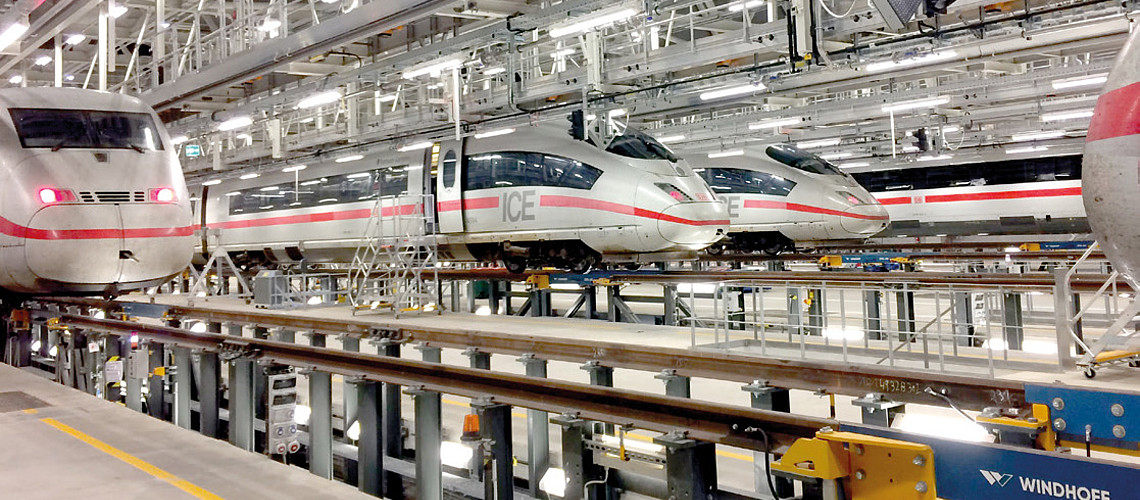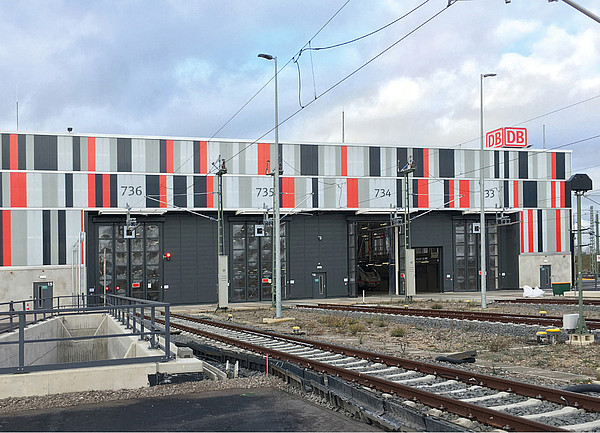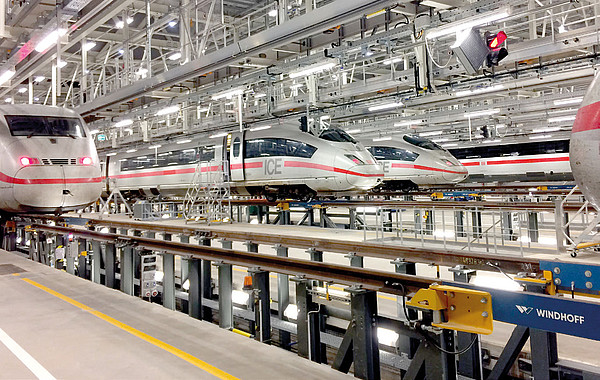Customer: Deutsche Bahn AG
Application: IBIS
Product: Operations management computer
Digitization of Intermodal Terminals by Bane NOR
Customer: Bane NOR
Application: BLU 2.0
Summary: Digitization of all intermodal terminals throughout Norway

Customer: Deutsche Bahn AG
Application: IBIS
Product: Operations management computer
After almost two years of construction, Deutsche Bahn recently opened Europe’s largest and most modern maintenance facility in the Nippes district of Cologne. Deutsche Bahn now services up to 17 high-speed trains a day at this site, including the new ICE 4. The heart and soul of this impressive facility is the central control system. Berghof Automation, the railway control management specialists of the Berghof Group of Companies, won the contract with its operations management computer (BFR) based on the IBIS control system developed by Berghof. It was a real milestone for the experienced Berghof experts. Never before have they installed and networked so many sensors, fuse systems and interfaces as in this project.
The spatial dimensions of the new plant alone clearly exceed all previous Berghof Automation projects. It extends over a length of almost four kilometers, with the main hall being 450 x 50 meters in size. Added to this are the dispatching tracks and many other outdoor facilities.

For the railroad dispatchers, the operations management computer (BFR), which is based on Berghof’s IBIS control system, is a considerable relief. This is because the modular maintenance, operations control, information and safety system (IBIS for short) optimizes maintenance and servicing work on trains by making the best possible use of all available resources in terms of technology, tracks and personnel. At the same time, the system strictly complies with all safety regulations of the German Federal Railway Authority (EBA). In this way, a control system can be used to centrally monitor decentrally distributed plants without the need for a large number of personnel.
By coupling with the signal box technology and the railroad information systems, the Cologne team works with only one control system thanks to the BFR from Berghof – both in the depot areas and the entire plant premises as well as on the directly adjacent tracks of DB Netz AG. This allows dispatchers to see at a glance when and from where each train is arriving and, above all, departing.
A further challenge: Besides the increased automation of processes, the control system should also ensure the highest possible level of work safety on each track. The system is therefore programmed in such a way that everyone in a position of authority must agree before a train can start moving – from the dispatcher to the switchman to the foreman. Employees use transponders to log on for a specific activity via operating data acquisition terminals located at the depot tracks.
This then automatically blocks the track for any train movement. In addition to the main controls, Berghof also installed an additional fallback level to maintain emergency operation even in the event of a complete failure of the main controls.

The spatial dimensions and these special requirements meant that the Berghof experts had to network an enormous number of interfaces and data. In total, they laid more than 60 kilometers of cable at the new maintenance plant in Cologne-Nippes and installed eight information boards for the traffic lights and signal systems, as well as eight warning systems containing 24 flashing lights and eight horns. More than 300 sensors are also used on the tracks to determine the train’s position to within ten meters.
Jürgen Schütze, Head of Inspection and System Technology at Berghof Automation, explains how the control system works: “A previously dispatched train is detected and the BFR checks that everything is ready for the train to safely enter the appropriate track. The entry is then automated. If a sensor detects train movement, the system warns the employees in the hall with warning lights and horns. The gate opens, the train pulls in, the gate closes, and the system automatically turns off the warning signals once the train has stopped.”
Led by Jürgen Schütze, the implementation of the diverse, individual hardware and software solutions at Berghof went exactly according to plan, partly because the company relied on state-of-the-art fieldbus systems to capture the sensors and couple the interface partners.
